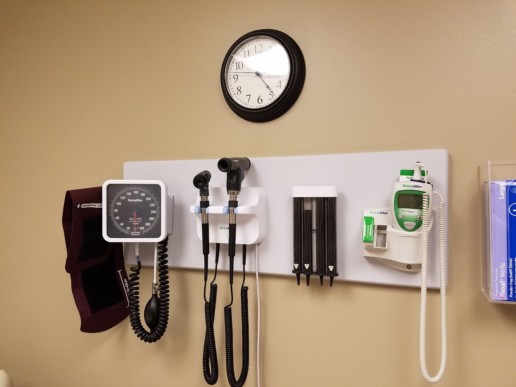5 critical elements to consider when choosing an HSA administrator
The Employee Benefit Research Institute recently reported that 83 percent of today’s workforce said health insurance was very or extremely important in deciding whether they would change jobs or not. Read on to learn more.
If anyone needed any reminding, health insurance is still an urgent matter to today’s employees. According to Employee Benefit Research Institute’s 2017 Health and Workplace Benefits Survey, 83% of the workforce said that health insurance was very or extremely important in deciding whether to stay in or change jobs. Yet research has uncovered that employees tend to delay or disengage from retirement and healthcare decisions, which they view as difficult and complex.
Fortunately, with consumer-driven healthcare plans and health savings accounts on the rise, benefits managers have a real opportunity to turn this frustrating situation into a positive one for their workforce. A critical step in doing so is choosing the right health savings administrator.
Employers should consider the following five elements when choosing a health savings administrator, or for evaluating the one with which you’re currently working.
1. Minimize risk by ensuring business alignment. Look for a health savings administrator that aligns with your company’s mission and business goals. Lack of business alignment can create real risks to your organization and employees and can damage your company brand and employee experience. For example, if your account administrator nickels-and-dimes you and your employees with added fees, you’ll experience higher costs and reduced employee satisfaction.
2. Service, support are key to employee satisfaction. It’s a fact: Employees will have HSA-related questions — probably a lot of them. Their questions may range from pharmacy networks and claims to the details of IRS rules. That’s why account management and customer service support from your health savings administrator are vital. Having first-class customer service means that employees will be better educated on their savings accounts, which can result in HSA adoption and use to their fullest potential.

3. Education, communication drive adoption. Educating employees about health savings accounts using various methods is critical, especially in the first year of adoption. This ensures your employees understand the true benefits and how to maximize their account. As CDHPs require more “skin in the game,” consumers show a higher likelihood to investigate costs, look for care alternatives, use virtual care options, and negotiate payments with providers. These are all positive outcomes of HSA adoption, and an HSA administrator oftentimes can offer shopping, price and quality transparency tools to enable your employees to make these healthcare decisions.
4. Understand the HSA admin’s technology. Because most spending and savings account transactions are conducted electronically, it’s critical that your administrator’s technology platform be configured to deliver a positive user experience that aligns with your expectations. It should allow for flexibility to add or adjust offerings and enable personalization and differentiation appropriate for your brand.
Be aware that some vendors have separate technology platforms, each running separate products (i.e., HSAs versus FSAs) and only integrate through simple programming interfaces. Because the accounts are not truly integrated, consumers may need to play a bigger role in choosing which accounts their dollars come from and how they’re paid, leading to consumer frustration and an increase in customer service call volume. With a fully integrated platform, claims flow seamlessly between accounts over multiple plan years, products and payment rules.
5. Evaluate your financial investment. Transparent pricing and fees from your health savings administrator is important. Administrators can provide value in a variety of ways including tiered product offerings, no traditional banking fees or hidden costs, and dedicated customer service. It’s important to know what these costs are up front.
Evaluate your financial investment by knowing whether or not your health savings administrator charges for program upgrades, multiple debit cards, unique data integration requirements, ad-hoc reports and more. These fees can add up and result in a final investment for which your company didn’t plan. And, it’s best to know in advance if your account holders will be charged any additional fees. Not communicating these potential fees at adoption can lead to dissatisfaction, which can then hurt your employee satisfaction ratings and complete adoption of the savings account products.
Choosing a health savings administer is a critical decision that affects not only employee satisfaction but the entire company. With eight in 10 employees ranking their benefits satisfaction as extremely or very important in terms of job satisfaction, according to EBRI, taking the time to fully vet your health savings administrator will pay dividends.
SOURCE: Santino, S. (5 November 2018) "5 critical elements to consider when choosing an HSA administrator" (Web Blog Post). Retrieved from https://www.employeebenefitadviser.com/opinion/what-to-consider-when-choosing-an-hsa-administrator
8 scary benefits behaviors employees should avoid
Nothing is more scary to benefits professionals than employees failing to review their open enrollment materials. Continue reading for eight of the scariest benefit mistakes and tips on how you can correct them.
Halloween is already frightening enough, but what really scares benefits professionals are the ways employees can mishandle their benefits. Here are eight of the biggest mistakes, with tips on correcting them.
Participants don’t review any annual enrollment materials
Why it’s scary: Employees are making or not making decisions based on little or no knowledge.
Potential actions: Employers can implement a strategic communications campaign to educate and engage employees in the media and format appropriate for that employee class, or consider engaging an enrollment counselor to work with participants in a more personalized manner.
Employees don’t enroll in the 401(k) or don’t know what investment options to choose
Why it’s scary: U.S. employees are responsible for much of their own retirement planning and often leave money on the table if there is an employer match.
Potential actions: Employers can offer auto-enrollment up to the matching amount/percent; consider partnering with a financial wellness partner, and provide regular and ongoing communications of the 401(k)’s benefits to all employees.
Employees don’t engage in the wellness program
Why it’s scary: The employee is potentially missing out on the financial and personal benefits of participating in a well-being program.
Potential actions: Employers need to continuously communicate the wellness program throughout the year through various media, including home media. Employers also should ensure the program is meeting the needs of the employees and their families.
Employees don’t update ineligible dependents on the plan
Why it’s scary: Due to ambiguity where the liability would reside, either the employee or the plan could have unexpected liability.
Potential action: Employers can require ongoing documentation of dependents and periodically conduct a dependent audit.
Employees don’t review their beneficiary information regularly
Why it’s scary: Life insurance policy proceeds may not be awarded according to the employee’s wishes.
Potential action: Employers can require beneficiary confirmation or updates during open enrollment.
Employees do not evaluate the options for disability — whether to elect a higher benefit or have the benefit paid post-tax
Why it’s scary: Disability, especially a short-term episode, is very common during one’s working life; maximizing the benefit costs very little in terms of pay deductions, but can reap significant value when someone is unable to work.
Potential action: Employers can provide webinars/educational sessions on non-medical benefits to address those needs.
Employees do not take the opportunity to contribute to the health savings account
Why it’s scary: The HSA offers triple tax benefits for long-term financial security, while providing a safety net for near-term medical expenses.
Potential actions: Employers can select the most administratively simple process to enroll participants in the HSA and allow for longer enrollment periods for this coverage.
Employees do not use all of their vacation time
Why it’s scary: Vacation allows an employee an opportunity to recharge for the job.
Potential actions: Employers can encourage employees to use their vacation and suggest when the workload might be more accommodating to time off for those employees who worry about workloads.
SOURCE: Gill, S. & Manning-Hughes, R. (31 October 2018) "8 Scary Benefits Behaviors Employees Should Avoid" (Web Blog Post). Retrieved from https://www.benefitnews.com/slideshow/8-scary-benefits-behaviors-employees-have?brief=00000152-14a5-d1cc-a5fa-7cff48fe0001
8 ways to maintain HSA eligibility
Is your high-deductible health plan still HSA qualified? Ensuring your high-deductible health plan remains HSA qualified is no easy task. Read this blog post for eight ways employers can maintain HSA eligibility.
For employers sponsoring high-deductible health plans with health savings accounts, ensuring that the HDHP continuously remains HSA qualified is no easy task. One challenge in this arena is that most of the rules and regulations are tax-related, and most benefit professionals are not tax professionals.
To help, we’ve created a 2019 pre-flight checklist for employers.
With 2019 rapidly approaching and open enrollment season beginning for many employers, now’s a great time to double-check that your HDHP remains qualified. Here are eight ways employers can maintain HSA eligibility.
1. Ensure in-network plan deductibles meet the 2019 minimum threshold of $1,350 single/$2,700 family.
To take the bumps out of this road, evaluate raising the deductibles comfortably above the thresholds. That way, you won’t have to spend time and resources amending the plan and communicating changes to employees each year that the threshold increases. Naturally, plan participants may not be thrilled with a deductible increase; however, if your current design requires coinsurance after the deductible, it’s likely possible on a cost neutral basis to eliminate this coinsurance, raise the deductible and maintain the current out-of-pocket maximum. For example:
| Current | Proposed | |
| Deductible | $1,350 single / $2,700 family | $2,000 single / $4,000 family |
| Coinsurance, after deductible | 80% | 100% |
| Out-of-pocket maximum | $2,500 single / $5,000 family | $2,500 single / $5,000 family |
This technique raises the deductible, improves the coinsurance and does not change the employee’s maximum out-of-pocket risk. The resulting new design may also prove easier to explain to employees.
2. Ensure out-of-pocket maximums do not exceed the maximum 2019 thresholds of $6,750 single/$13,500 family.
Remember that the 2019 HDHP out-of-pocket limits, confusingly, are lower than the Affordable Care Act 2019 limits of $7,900 single and $15,800 family. (Note to the U.S. Congress: Can we please consider merging these limits?) Also, remember that out-of-pocket costs do not include premiums.
3. If your plan’s family deductible includes an embedded individual deductible, ensure that each individual in the family must meet the HDHP statutory minimum family deductible ($2,700 for 2019).
Arguably, the easiest way to do so is making the family deductible at least $5,400, with the embedded individual deductible being $5,400 ÷ 2 = $2,700. However, you’ll then have to raise this amount each time the IRS raises the floor, which is quite the hidden annual bear trap. Thus, as in No. 1, if you’re committed to offering embedded deductibles, consider pushing the deductibles well above the thresholds to give yourself some breathing room (e.g., $3,500 individual and $7,000 family).
For the creative, note that the individual embedded deductible within the family deductible does not necessarily have to be the same amount as the deductible for single coverage. But, whether or not your insurer or TPA can administer that out-of-the-box design is another question. Also, beware of plan designs with an embedded single deductible but not a family umbrella deductible; these designs can cause a family to exceed the out-of-pocket limits outlined in No. 2.
Perhaps the easiest strategy is doing away with embedded deductibles altogether and clearly communicating this change to plan participants.

4. Ensure that all non-preventive services and procedures, as defined by the federal government, are subject to the deductible.
Of note, certain states, including Maryland, Illinois and Oregon, passed laws mandating certain non-preventive services be covered at 100%. While some of these states have reversed course, the situation remains complicated. If your health plan is subject to these state laws, consult with your benefits consultant, attorney and tax adviser on recommended next steps.
Similarly, note that non-preventive telemedicine medical services must naturally be subject to the deductible. Do you offer any employer-sponsored standalone telemedicine products? Are there any telemedicine products bundled under any 100% employee-paid products (aka voluntary)? These arrangements can prove problematic on several fronts, including HSA eligibility, ERISA and ACA compliance.
Specific to HSA eligibility, charging a small copay for the services makes it hard to argue that this isn’t a significant benefit in the nature of medical care. While a solution is to charge HSA participants the fair market value for standalone telemedicine services, which should allow for continued HSA eligibility, this strategy may still leave the door open for ACA and ERISA compliance challenges. Thus, consider eliminating these arrangements or finding a way to compliantly bundle the programs under your health plan. However, as we discussed in the following case study, doing so can prove difficult or even impossible, even when the telemedicine vendor is your TPA’s “partner vendor.”
Finally, if your firm offers an on-site clinic, you’re likely well aware that non-preventive care within the clinic must generally be subject to the deductible.
5. Depending on the underlying plan design, certain supplemental medical products (e.g., critical illness, hospital indemnity) are considered “other medical coverage.” Thus, depending on the design, enrollment in these products can disqualify HSA eligibility.
Do you offer these types of products? If so, review the underlying plan design: Do the benefits vary by underlying medical procedure? If yes, that’s likely a clue that the products are not true indemnity plans and could be HSA disqualifying. Ask your tax advisor if your offered plans are HSA qualified. Of note, while your insurer might offer an opinion on this status, insurers are naturally not usually willing to stand behind these opinions as tax advice.
6. The healthcare flexible spending account 2 ½-month grace period and $500 rollover provisions — just say no.
If your firm sponsors non-HDHPs (such as an HMO, EPO or PPO), you may be inclined to continue offering enrollees in these plans the opportunity to enroll in healthcare flexible spending accounts. If so, it’s tempting to structure the FSA to feature the special two-and-a-half month grace period or the $500 rollover provision. However, doing so makes it challenging for an individual, for example, enrolled in a PPO and FSA in one plan year to move to the HDHP in the next plan year and become HSA eligible on day one of the new plan year. Check with your benefits consultant and tax adviser on the reasons why.
Short of eliminating the healthcare FSA benefit entirely, consider prospectively amending your FSA plan document to eliminate these provisions. This amendment will, essentially, give current enrollees more than 12 months’ notice of the change. While you’re at it, if you still offer a limited FSA program, consider if this offering still makes sense. For most individuals, the usefulness of a limited FSA ebbed greatly back in 2007. That’s when the IRS, via Congressional action, began allowing individuals to contribute to the HSA statutory maximum, even if the individual’s underlying in-network deductible was less.
7. TRICARE
TRICARE provides civilian health benefits for U.S Armed Forces military personnel, military retirees and their dependents, including some members of the Reserve component. Especially if you employ veterans in large numbers, you should become familiar with TRICARE, as it will pay benefits to enrollees before the HDHP deductible is met, thereby disqualifying the HSA.
8. Beware the incentive.
Employers can receive various incentives, such as wellness or marketplace cost-sharing reductions, which could change the benefits provided and the terms of an HDHP. These types of incentives may allow for the payment of medical care before the minimum deductible is met or lower the amount of that deductible below the statutory minimums, either of which would disqualify the plan.
This article originally appeared in Employee Benefit News.
SOURCE: Pace, Z.; Smith, B. (22 October 2018) "8 ways to maintain HSA eligibility" (Web Blog Post). Retrieved from https://www.employeebenefitadviser.com/opinion/8-ways-to-maintain-hsa-eligibility
Stop making 401(k) contributions. Fill up your HSA first
Open enrollment season is nearing, and soon, employees will be able to decide how much they want to contribute to their health savings accounts (HSA) next year. Read this blog post to learn why employees should contribute to their HSA before their 401(k).
With healthcare open enrollment season approaching, employees electing a high-deductible health plan will soon have an opportunity to decide how much to contribute to their health savings account for next year.
My advice?
Contribute as much as you possibly can. And prioritize your HSA contributions ahead of your 401(k) contributions. I believe that employees eligible to contribute to an HSA should max out their HSA contributions each year. Here’s why.
See also: What’s the best combination of spending/saving with an HSA?
HSAs are triple tax-free. HSA payroll contributions are made pre-tax. When balances are used to pay qualified healthcare expenses, the money comes out of HSA accounts tax-free. Earnings on HSA balances also accumulate tax-free. There are no other employee benefits that work this way.
HSA payroll contributions are truly tax-free. Unlike pre-tax 401(k) contributions, HSA contributions made from payroll deductions are truly pre-tax in that Medicare and Social Security taxes are not withheld. Both 401(k) pre-tax payroll contributions and HSA payroll contributions are made without deductions for state and federal taxes.
No use it or lose it. You may confuse HSAs with flexible spending accounts, where balances not used during a particular year are forfeited. With HSAs, unused balances carry over to the next year. And so on, forever. Well at least until you pass away. HSA balances are never forfeited due to lack of use.
Paying retiree healthcare expenses. Anyone fortunate enough to accumulate an HSA balance that is carried over into retirement may use it to pay for many routine and non-routine healthcare expenses.
See also: 3 things you should be telling employees about HSAs
HSA balances can be used to pay for Medicare premiums, long-term care insurance premiums, COBRA premiums, prescription drugs, dental expenses and, of course, any co-pays, deductibles or co-insurance amounts for you or your spouse. HSA accounts are a tax-efficient way of paying for healthcare expenses in retirement, especially if the alternative is taking a taxable 401(k) or IRA distribution.
No age 70 1/2 minimum distribution requirements. There are no requirements to take minimum distributions at age 70.5 from HSA accounts as there are on 401(k) and IRA accounts. Any unused balance at your death can be passed on to your spouse (make sure you have completed a beneficiary designation so the account avoids probate). After your death, your spouse can enjoy the same tax-free use of your account. (Non-spouse beneficiaries lose all tax-free benefits of HSAs).
Contribution limits. Maximum annual HSA contribution limits (employer plus employee) for 2019 are modest — $3,500 per individual and $7,000 for a family. An additional $1,000 in catch-up contributions is permitted for those age 55 and older. Legislation has been proposed to increase the amount of allowable contributions and make usage more flexible. Hopefully, it will pass.
HSAs and retirement planning. Most individuals will likely benefit from the following contribution strategy incorporating HSA and 401(k) accounts:
- Determine and make the maximum contributions to your HSA account via payroll deduction. The maximum annual contributions are outlined above.
- Calculate the percentage that allows you to receive the maximum company match in your 401(k) plan. Make sure you contribute at least that percentage each year. There is no better investment anyone can make than receiving free money. You may be surprised that I am prioritizing HSA contributions ahead of employee 401(k) contributions that generate a match. There are good reasons. Besides being triple tax-free and not being subject to age 70 1/2 required minimum distributions, these account balances will likely be used every year. Unfortunately, you may die before using any of your retirement savings. However, someone in your family is likely to have healthcare expenses each year.
- If the ability to contribute still exists, then calculate what it would take to max out your contributions to your 401(k) plan by making either the maximum percentage contribution or reaching the annual limit.
- Finally, if you are still able to contribute and are eligible, consider contributing to a Roth IRA. Roth IRAs have no age 70 1/2 minimum distribution requirements (unlike pre-tax IRAs and 401(k) accounts). In addition, account balances may be withdrawn tax-free if certain conditions are met.
The contributions outlined above do not have to be made sequentially. In fact, it would be easiest and best to make all contributions on a continuous, simultaneous, regular basis throughout the year. Calculate each contribution percentage separately and then determine what you can commit to for the year.
See also: Change to 2018 HSA Family Contribution Limit
Investing in HSA contributions is important. The keys to building an HSA balance that carries over into retirement include maxing out HSA contributions each year and investing unused contributions so account balances can grow. If your HSAs don’t offer investment funds, talk to your human resources department about adding them.
HSAs will continue to become a more important source of funds for retirees to pay healthcare expenses as the use of HDHPs becomes more prevalent. Make sure you maximize your use of these accounts every year.
SOURCE: Lawton, R. (19 September 2018) "Stop making 401(k) contributions. Fill up your HSA first" (Web Blog Post). Retrieved from https://www.benefitnews.com/opinion/viewsstop-making-401k-contributions-fill-up-your-hsa-first
What's the best combination of spending/saving with an HSA?
Health savings accounts (HSAs) are changing the way many people are planning for retirement. Do you know much about HSAs and what they can offer? Continue reading to learn more about them.
The old adage, “You need to spend money to make money,” is applicable to many areas of life and business, but when it comes to retirement, not so much. Particularly for people who are enrolled in retirement accounts, like the 401(k) or IRA.
After all, the more you’re able to fund these accounts on a yearly basis, the sooner you’ll be able to accrue enough money to retire to that beach condo or cabin in the backcountry. But in recent years, a newcomer has entered the retirement planning picture offering a novel new way to save money: By spending it.
The health savings account (HSA) has the potential to influence the spending/saving conundrum many young professionals face: Do I spend my HSA money on qualifying health care expenses (which can save me up to 40 percent on the dollar) or do I pay out of pocket for the same expenses and watch my HSA balance grow?
What many people don’t realize is that yearly HSA contributions are tax-deductible. So if account holders aren’t factoring in doctor co-payments, prescription drugs and the thousands of over-the-counter health products that tax-advantaged HSA funds can cover, they may be missing an opportunity to save in taxes each year.
By maximizing their contributions and paying with HSA funds as opposed to out-of-pocket, HSA users can cover products they were going to purchase anyway with tax-free funds, while using whatever is rolled over to save for retirement.
Spending more to save more. Who knew?
Here’s some food for thought that savvy employers should consider sharing with employees of all ages.
Facts about health savings accounts (HSAs)
HSAs were created in 2003, but unlike flexible spending accounts (FSAs) that work on a year-to-year basis, HSAs have no deadlines and funds roll over annually. HSAs also feature a “triple tax benefit,” in that HSA contributions reduce your taxable income, interest earned on the HSA balance accrues tax free, and withdrawals for qualifying health expenses are not taxed.
Account holders can set aside up to $3,500 (2019 individual health plan enrollment limit) annually and $7,000 if participating in the health plan as two-person or family, and these funds can cover a huge range of qualifying medical products and services.
HSAs can only be funded if the account holder is enrolled in an HSA-qualified high-deductible health plan (HDHP). If the account holder loses coverage, he/she can still use the money in the HSA to cover qualifying health care expenses, but will be unable to deposit more funds until HDHP coverage resumes. The IRS defines an HSA-qualified HDHP as any plan with a deductible of at least $1,350 for an individual or $2,700 for a family (in 2019 – limits are adjusted each year).
Despite their relatively short lifespan, HSAs are among the fastest growing tax-advantaged accounts in the United States today. In 2017, HSAs hit 22 million accounts for the first time, but a massive growth in HSA investment assets is the real story. HSA investment assets grew to an estimated $8.3 billion at the end of December, up 53 percent year-over-year (2017 Year-End Devenir HSA Research Report).
However, while HSAs offer immediate tax benefits, they also have a key differentiator: the ability to save for retirement. HSA funds roll over from year to year, giving account holders the option to pay for expenses out of pocket while they are employed and save their HSA for retirement.
If account holders use their HSA funds for non-qualified expenses, they will face a 20% tax penalty. However, once they are Medicare-eligible at age 65, that tax penalty disappears and HSA funds can be withdrawn for any expense and will only be taxed as income. Additionally, once employees turn 55, they can contribute an extra $1,000 per year to their HSAs, a “catch-up contribution,” to bolster their HSA nest eggs before retirement. When all is said and done, diligently funding an HSA can provide a major boost to employees’ financial bottom lines in retirement.
What’s the best HSA strategy by income level?
HSAs have immediate tax-saving benefits and long-term retirement potential, but they require different savings strategies based on your income level.
Ideally, if you have the financial means to do so, putting aside the HSA maximum each year may allow you to cover health expenses as they come up and continue saving for retirement down the road. But even if you’re depositing far below the yearly contribution limit, your HSA can provide a boost to your financial wellness now and in the future.
I’ve seen this firsthand. Before we launched our e-commerce store for all HSA-eligible medical products, we extensively researched the profiles of the primary HSA user groups through partnerships with HSA plan providers.
We then created “personas” that provide insights on how to communicate with different audiences about HSA management at varying points in the account holder’s life cycle, and these same lessons can be just as vital to employers.
The following contribution strategies are based on these personas and offer insights that could help employees get their HSA nest egg off and growing. These suggestions offer a means of getting started.
As employees receive pay raises and promotions, they may be able to increase their HSA contributions over time, but this can be a way to get their health care savings off the ground and then adjust to life with an HSA.
Disclaimer: These personas are for illustrative purposes only and in all cases you may want to speak with a tax or financial advisor. Information provided should not be considered tax or legal advice.
1. Employee Type: Millennials/Gen-Z with an income between $35-75k/year
For the vast majority of young professionals starting out, health care is not at the top of their budget priorities. However, high-deductible health plans have low monthly premiums, and by contributing to an HSA, an account holder can cover these expenses until the deductible is exhausted. For this group of employees, starting off small and gradually increasing contributions as income increases is a sound financial solution.
Potential Contribution Range: $1,000-$1,500
2. Employee Type: Full-Time HDHP Users Enrolled with an income between $35-60k/year
With many companies switching to all HDHP health plan options, a large contingent of workers find themselves using HDHPs for the first time. For this group, it’s all about finding the right balance between tax savings and the ability to cover necessary health expenses. Setting aside money in an HSA will allow workers to reduce how much they pay in taxes yearly by reducing their taxable income, while being able to pay down their deductible with HSA funds at the same time.
Potential Contribution Range: $1,000-$1,500
3. Employee Type: Staff with Families with an income between $75-100k/year
Low premiums from an HDHP plan are attractive for these employees, but parents will have far more health expenses to cover and more opportunities to utilize tax-free funds to cover health and wellness products. With more opportunities to spend down their deductible with qualifying health expenses and the resulting tax savings, parents should strive to put the family maximum contribution ($7000 for 2019) into their HSAs.
Potential Contribution Range:$4,000-$6,900
4. Employee Type: Pre-Retirement Staff with an income between $100-200k/year
Employees who are in their peak earning years have the greatest opportunity to put away thousands in tax-free funds through an HSA. So whenever possible, they should be encouraged to contribute the largest possible allocation to their HSA on a yearly basis. Additionally, employees age 55 and over can contribute an extra $1,000 to their HSA annually until they reach Medicare age at 65 to fast-track their HSA earnings.
Potential Contribution Range: HSA Maximum ($3,500 individual, $7,000 families for 2019)
What else should employers know about HSAs?
Employers can help employees get the most out of HSAs. Here are some tips:
- Employers should consider contributing to their employees’ accounts on an annual basis. Employer contributions to an HSA are tax-deductible, and this has the added bonus for employees of making it easier to max out their contributions annually.
- Remember: Employer and employee contributions cannot exceed the yearly HSA contribution limits ($3,500 individual, $7,000 family for 2019), so make this information clear to employees during open enrollment.
- If employees are still on the fence about HSAs, remind them that deductible expenses can be paid for with HSA funds, and yearly HSA contributions are tax-deductible for employees as well.
SOURCE:
Miller, J (2 July 2018) "What's the best combination of spending/saving with an HSA?" [Web Blog Post]. Retrieved from https://www.benefitspro.com/2018/06/08/whats-the-best-combination-of-spendingsaving-with/
3 things you should be telling employees about HSAs
HSAs can seem to be complicated but can save your employees an additional 20 percent on average compared to paying out of their pockets. Here are 3 tips for an employer to keep in mind about HSAs.
Everyone wants to spend less on health care, but many employees don’t realize that an HDHP plan with an HSA might be the best deal they can get. Some people get scared off by an HDHP’s big deductible, some are accustomed to FSAs, and some just think an HSA seems too complicated.
But using an HSA to pay for health expenses can save your employees an additional 20 percent on average compared to paying out of their pocket. HSAs give them a way to pay for current and future medical expenses, and every dollar they save in their HSA saves you money on payroll taxes.
Here are three things you should be communicating about your HSAs:
1. FSAs are rubber, HSAs are glue
Many employees familiar with FSAs will expect that all health care accounts follow the “use it or lose it” rule. To them, saving a lot of money on health care will seem like a gamble since with an FSA, it can be better to save too little rather than way too much.
Make sure your employees understand that there’s no “use by” date on their HSA. The money they save will stick with them until they need it — this year, next year, or twenty years from now. Emphasize that the HSA is their account, and they’ll carry it with them even if they change jobs or retire. And speaking of retirement…
2. HSAs are a great way to save for retirement
Employees who understand their HSA may still only think of them as a way to cover their current medical expenses. The sobering reality is that the average couple will have over $240,000 in medical expenses during retirement. An HSA offers a great way to save for those expenses and other retirement costs.
Explain to your employees that HSA savings can be invested like a 401(k) and can grow year-after-year. An HSA actually offers better tax savings than an 401(k) when it’s used to cover medical expenses. Reassure your employees that there’s no downside to saving too much, because once they turn 65, their HSA savings can be spent on non-medical expenses, so they can use that HSA money to buy themselves those senior-discount skydiving lessons. And speaking of treating themselves…
3. You can pay yourself back with an HSA (thanks, self!)
Many employees worry that they’ll get no benefit from an HSA if they run into medical expenses before they’ve saved enough, so they choose an FSA, since their FSA annual contribution would be available immediately.
Let them know that they can use their HSA to “reimburse themselves” for any out-of-pocket money they spend on medical expenses. So if they spend $100 out-of-pocket on an X-ray in January, they can save some pre-tax money in their HSA during February, and write themselves a check for $100. Just remind them the medical expense has to be from afterthey opened the HSA—so setting it up right away is critical.
HSAs can save everybody money; employees just need to know how to make it work. Having a solid understanding of the benefits and flexibility of HSAs can help employees realize how easy it is to lower their taxes, cover their medical expenses, and save for the future.
SOURCE:
Schneider, C (2 July 2018) "3 things your clients should be telling employees about HSAs" [Web Blog Post]. Retrieved from https://www.benefitspro.com/2018/07/02/3-things-your-clients-should-be-telling-employees/
3 ideas to ease the transition to a high-deductible world
With high-deductible health plans rising, employers may not be thinking about the drastic changes happening in the future. Here are some tips to make a transition into a high deductible industry painless.
We’re all familiar with the necessary evils of today’s society: paying taxes, going to the dentist and sitting in rush-hour traffic. Now, there’s another one to add to the list — high deductible health plans (HDHPs). They’re on the rise due to increasingly unmanageable health care costs caused by factors such as increased carrier and hospital consolidation, unregulated pharmaceutical prices, and a lack of financial awareness among medical providers.
In response, prudent employers who want to continue providing health benefits but can’t keep up with the costs are turning to HDHPs to share the financial burden with employees and encouraging those employees to become more disciplined shoppers. This is predictably being met with resistance.
But there’s a more urgent matter at hand: until we find a way to flip the health-care system on its head, we’re anticipating a future where networks get narrower and significantly limit options and deductibles rise to catastrophic heights.
Employers may not be thinking ahead for these drastic changes, which is why brokers can be instrumental in helping clients guide their employees toward the necessary mental and financial preparations. Here are a few ideas to get them started.
1. Shift gears to plan beyond the calendar year.
For most, health care is an infrequent experience that’s handled reactively: you get sick, you go to the doctor, your insurance foots the bill. However, now that employees are on the hook for potentially thousands of dollars, it’s crucial that they plan ahead.
To facilitate this shift in mindset, employers should encourage employees to:
- Utilize a health savings account (HSA):When it comes to HSAs, people tend to fall into one of two schools of thought: “HSAs are a silver bullet” or “HSAs are a terrible excuse by politicians to allow the existence of HDHPs.” Rarely is a situation so black and white, and this one is no exception. HSAs aren’t the best choice for everyone. Certain demographics can’t afford to juggle the high costs of health care (and life) while also contributing funds to an account. However, it’s important to keep in mind that as costs continue to rise, more people will be pushed above the HSA qualification line and having an account may be the only life raft available when drowning in high deductibles — a trend we’re already starting to see.In an ideal world, the HSA wouldn’t exist. Out-of-control health care costs bear the blame for solutions like HDHPs — and the HSA is our consolation prize. The reason I advocate the utilization of these accounts for long-term planning is because they are the only health care benefit we have that encourages people to think beyond 12 months. Unlike the flexible spending account (FSA), the money in an HSA rolls over every year and grows over time, so it lets people save for years down the road (maybe when the pediatrician bills pile up, or you finally have that major surgery) vs. scrambling to spend their funds before the end of the year. Also, if an employer is contributing to an employee’s HSA, it’s leaving money on the table not to sign up for an account.
- Shop for the best “deals”:Unless someone is a frequent flyer in the health care system, they might brush off shopping for healthcare since it seems like a lot of effort for a single doctor’s visit. However, considering the fact that the cost of an ACL surgery can vary as much as $17,000, those numbers certainly add up over time. (Even more so if a patient fails to find care that’s in network.) Helping employees understand this concept, and pairing it with an easy-to-use transparency solution, can save them tons of money in the long run — especially if the cost savings from each doctor’s visit are deposited into an HSA for future use.
2. Recognize that options are still available.
I’m not going to try to frame high deductibles in a positive light. It’s not the ideal situation for consumers or employers. But sometimes, just knowing there are options in a seemingly bleak situation can provide temporary relief. Here are some tips for employers to share with employees when they’re frustrated about their HDHPs:
- Ask questions:Employees shouldn’t be afraid to ask questions. Healthcare is known for being convoluted, so it’s likely they’re not alone in any confusion they experience. They should start with health insurance and take time with the HR manager to understand the specifics of their coinsurance, copays, deductibles, and benefits so they’re aware of all their options, such as free preventive services. Another great place for questions is at the doctor’s office. Asking about and negotiating costs (yes, you can do that!) can have huge payoffs — Consumer Reports found that only 31 percent of Americans haggle with doctors over medical bills but that 93 percent of those who did were successful, with more than a third of those saving more than $100.
- Stay educated:“Education” can be a tired term for brokers and employers. Employees never seem to read the emails and collateral materials that teams painstakingly curate each year. While disheartening, I think the focus on education is a long but ultimately rewarding process. Consider the 401(k). These plans struggled through the recessions in the early 2000s, but through constant behavioral reinforcement (helped largely by policies such as The Pension Protection Act, which made it easier for companies to automatically enroll their employees in 401(k) plans) and continued efforts by employers, 401(K)s bounced back and hold $4.8 trillion in assets today.The same lesson can be applied to your education efforts as well. That is, eventually the education will stick. So help create a new ecosystem for employees to navigate by getting timely information and resources out there about maximizing HDHPs and utilizing HSAs.
3. Stay optimistic because change is coming.
This point is a bit more abstract. Worrying about health care costs is exhausting, and things are likely to get worse before they get better. However, there’s been a lot of news in the health care space that should bring a glimmer of optimism.
For instance, we heard about the partnering of three industry powerhouses to create a new health care company for their employees. It’s been fascinating to see how much chatter this announcement has already generated and will likely keep traditional employer health care vendors on their toes.
While the trend of employers building coalitions to tackle health care costs is nothing new and it’s too early to tell how successful this initiative will be, the bigger point is that this is a strong signal that change is desperately needed. More and more companies — regardless of what industry they’re in — are starting to realize that they’re all in the business of health care. And as we gain power in numbers, I believe we will build the momentum to create some serious change.
It’s tough to win in today’s health care world, and it’s likely going to get even more challenging over the next few years. But if brokers and employers can provide the right level of guidance, education, and resources, they can help employees better mentally and financially manage their high-deductible futures.
SOURCE:
Vivero, D (2 July 2018) "3 ideas to ease the transition to a high-deductible world" [Web Blog Post]. Retrieved from https://www.benefitspro.com/2018/02/08/3-ideas-to-ease-the-transition-to-a-high-deductibl/
HSA How-To
Health Savings Accounts can be tricky, employees have the control, employers and insurance companies are there to guide them in the right direction. Here is a how to helping guide to assist your customers to the right HSA plan.
If an employer wants to offer employees pretax payroll deferrals to their health savings accounts, the employer needs to first create a Section 125 plan or cafeteria plan that allows HSA deferrals.
A cafeteria plan is the only way for employers to offer employees a choice between taxable and nontaxable benefits, “without the choice causing the benefits to become taxable,” the IRS says. “A plan offering only a choice between taxable benefits is not a Section 125 plan.”
Here are five things to know about HSAs and Section 125 plans.
1. A Section 125 plan is just one of several ways for employers to help employees with funding their HSAs.
Employers offering HDHPs face the choice of whether and how to help their employees with the funding of the employees’ HSAs. The options include the following:
- Option 1 – Employee after-tax contributions.Employers are not required to help with the employees’ HSAs and may choose not to. In this case, employees may open HSAs on their own and receive the tax deduction on their personal income tax return. This option allows for income tax savings, but not payroll taxes. A variation on this option is for employers to allow for post-tax payroll deferral (basically, direct deposit of payroll funds into an HSA without treating the deposit any differently than other payroll which may also be directly deposited into an employee’s personal checking account).
This does not change the tax or legal situation, but it does provide convenience for employees and will likely increase HSA participation and satisfaction.
- Option 2 – Employee pretax payroll deferral.Employers can help employees fund their HSAs by allowing for HSA contributions via payroll deferral. This is inexpensive and can be accomplished by adding a Section 125 cafeteria plan with HSA deferrals as an option. Employers benefit by not having to pay payroll taxes on the employees’ HSA contributions. Employees save payroll taxes as well. Plus, HSA contributions are not counted as income for federal, and in most cases, state income taxes. Setting up automatic payments generally simplifies and improves employee savings.
- Option 3 – Employer-funded contributions.Employers may make contributions to their employees’ HSAs without a Section 125 plan if the contributions are made directly. The contributions must be “comparable,” basically made fairly (with a lot of rules to follow). This type of contribution is tax deductible by the employer and not taxable to the employee (not subject to payroll taxes or federal income taxes and in most cases, not subject to state income taxes either).
- Option 4 – Employer and employee pretax funding.Employers can combine options 2 and 3, where the employer makes a contribution to the employees’ HSAs and the employer allows employees to participate in a Section 125 plan and enabling them to defer a portion of their pay pretax into an HSA. This is a preferred approach for a successful HDHP and HSA program, as it ensures that employees get some money into their HSA through the employer contribution and allows for the best tax treatment to allow for employees to contribute more on their own through payroll deferral.
- Options for more tax savings.Some employers go beyond these options to increase tax savings even more. Although a number of strategies exist to increase tax savings, using a limited-purpose FSA (or HRA) is a common one. Generally, FSAs are not allowed with HSAs; however, an exception exists for limited-purpose FSAs. Limited-purpose FSAs are FSAs limited to payments for preventive care, vision and dental care. This provides more tax savings and employees use the FSA to pay for the limited-purpose expenses (dental and vision) and save the HSA for other qualified medical expenses.
HRAs can also be used creatively in connection with HSA programs. The HRA cannot be a general account for reimbursement of qualified medical expenses, but careful planning can allow for a limited-purpose HRA, a postdeductible HRA, or other special types of HRAs.
2. There are several benefits for an employer using a Section 125 plan combined with an HSA.
- Employees can make HSA contributions through payroll deferral on a pretax basis.
- Employees may pay for their share of insurance premiums on a pretax basis.
- Employers and employees save payroll taxes (7.65 percent each on FICA and FUTA for contributions).
- Employers avoid the “comparability” rules for HSA contributions although employers are subject to the Section 125 plan rules.
3. The employer is responsible for administering the Section 125 plan.
For payroll deferral into an HSA through a Section 125 plan, the employer must reduce the employees’ pay by the amount of the deferral and contribute that money directly into the employees’ HSA.
The employer may do this administration itself or it may use a payroll service or another type of third-party administrator. In any case, the cost of the Section 125 plan itself and the ongoing administration are generally small and offset, if not entirely eliminated, by employer savings through reduced payroll taxes.
Another administrative element is the collection of Section 125/HSA payroll deferral election forms from employees. Employers that have offered Section 125 plans prior to introducing an HSA program are familiar with this process.
Unlike other Section 125 plan deferral elections, which only allow annual changes, the law allows for changes to the HSA deferral election as frequently as monthly.
Although frequent changes to the elections create a small administrative burden on the employer, the benefit to employees is significant. Employers are not required to offer changes more frequently than annually.
The full extent of the administrative rules for Section 125 plans is beyond the scope of this discussion.
4. Contributions to HSAs under Section 125 plans are subject to nondiscrimination rules.
A cafeteria plan must meet nondiscrimination rules. The rules are designed to ensure that the plan is not discriminatory in favor of highly compensated or key employees.
For example, contributions under a cafeteria plan to employee HSAs cannot be greater for higher-paid employees than they are for lower-paid employees. Contributions that favor lower-paid employees are not prohibited.
The cafeteria plan must not: (1) discriminate in favor of highly compensated employees as to the ability to participate (eligibility test), (2) discriminate in favor of HCEs as to contributions or benefits paid (contributions and benefits test), and (3) discriminate in favor of HCEs as measured through a concentration test that looks at the contributions made by key employees (key employee concentration test). Violations generally do not result in plan disqualification, but instead may cause the value of the benefit to become taxable for the highly compensated employees or key employees.
The nondiscrimination rules predate the creation of HSAs and how the rules apply to HSA contributions is an area where additional government guidance would be welcome.
5. An employer needs a Section 125 plan to allow for HSA contributions through payroll deferral.
Can an employer allow for HSA contributions through payroll deferral without a Section 125 plan? No, not if the goal is to save payroll taxes. Employers can offer HSA payroll deferral on an after-tax basis without concern over the comparability rules or the Section 125 plan rules. Amounts contributed under this method are treated as income to the employee and are deductible on the employee’s personal income tax return. The lack of any special tax treatment for this approach makes it unattractive for most employers and with just a small additional investment of money and time, a Section 125 plan could be added allowing for pretax deferrals.
Here is an example: Waving Flags, Inc. does not offer health insurance or a Section 125 plan to its employees. Waving Flags does provide direct deposit services to its employees that provide it with their personal checking account number and bank routing number. Maggie, an employee of Waving Flags, Inc., approaches the human resources person and asks to have her direct deposit split into two payment streams with $100 per month being directly deposited to her HSA and the balance of her pay being deposited into her personal checking account. She provides Waving Flags the appropriate account and routing numbers and signs the proper election forms.
Waving Flags is not subject to the Section 125 nondiscrimination rules for pretax payroll deferral, nor is Waving Flags subject to the HSA comparability rules. Waving Flags is simply paying Maggie by making a direct deposit into her HSA. The $1,200 Maggie elects to have directly deposited to her HSA in this manner will be reflected in Box 1 of her IRS Form W-2 from Waving Flags as ordinary income. She will be subject to payroll taxes on the amount. She can claim an HSA deduction on line 25 of her IRS Form 1040 when she files her tax return.
Maggie benefits from this approach by setting up an automatic contribution to her HSA, which often improves the commitment to savings. Most HSA custodians will offer a similar system that HSA owners can set up on their own by having their HSA custodian automatically draw a certain amount from a personal checking account at periodic intervals. Employer involvement is not necessary. Individuals with online banking tools available to them may be able to set it from their personal checking account as well to push money periodically to an HSA.
SOURCE:
Westerman, P (2 July 2018) "HSA How-To" [Web Blog Post]. Retrieved from https://www.benefitspro.com/2018/01/01/hsa-how-to/
Change to 2018 HSA Family Contribution Limit
Yesterday, the IRS released a bulletin that includes a change impacting contributions to Health Savings Accounts (HSAs).
- The family maximum HSA contribution limit has decreased from $6,900 to$6,850.
- This change is effective January 1, 2018 and for the entire 2018 calendar year.
- The self-only maximum HSA contribution limit has not changed.
- This means that current 2018 HSA contribution limits are $3,450 (self-only) and $6,850 (family).
Why is the change happening so abruptly?
The IRS continues to make adjustments to accommodate the new tax law that passed at the end of 2017. Tax reform updates require the IRS to implement a modified method of calculating inflation-adjusted or cost-of-living-adjusted limits for 2018. The IRS is now using a different index (Chained Consumer Price Index for All Urban Consumers) to calculate benefit-related inflationary adjustments.
Typically, the IRS adjusts the HSA limits for inflation on an annual basis about six months before the start of the impacted year. For example, the IRS established the 2018 limits in May 2017. Today’s bulletin supersedes those limits.
Resource:
• IRS Bulletin IRB 2018-10, March 5, 2018
Is a Health Savings Account Worth Your Time? The Best Advice from an Experienced Group Benefits Consultant.
This month’s CenterStage features Kelley Bell, a Group Benefits Consultant at Saxon. With over 25 years of experience in the financial industry, Kelley knows a thing or two on HSAs or Health Savings Accounts – what they are, who is eligible, how they’re funded, and when they can be used.
Kelley enjoys partnering with business owners and human resources managers to be their Healthcare Consultant. She understands that each business is unique and is dedicated, accessible and proactive in serving the needs of each client.
So, is an HSA a right fit for you? Let’s find out!
The Break-Down
Very similar to personal savings accounts, money in a Health Savings Account (HSA) is used to pay for eligible healthcare expenses (medical, dental and vision). You, not your employer or insurance company, own and control the money in your HSA. To be eligible for an HSA, you must have a special type of health insurance called a high-deductible health plan (HDHP).
With an HSA you can make tax-deductible contributions each year to pay for current and future healthcare costs. What you don't use in any given year will stay invested and continue to grow tax-free, assuming you eventually pull it out to use for medical costs. -CNN Money
Saxon offers HDHP group plans from one person on up that can be paired with the HSA. Here are some different highlights you should know if you are considering this type of Health Savings Account:
- HSA's aren't ideal for everyone. If having a high deductible seems too risky to you – or if you anticipate having significant healthcare expenses – a plan with a lower deductible and lower co-pays might make more sense.
- There are tax advantages, because deductibles on the HDHP are higher, premiums are generally lower.
- There is a maximum contribution limit per calendar year of $3,400 for individuals and $6,850 for families for 2018. Sometimes, these maximums do not reach your deductible. A personal tip: “Try to add a small amount via pre-tax payroll. You can change the amount anytime and if you have a significant procedure, try adding the funds to the account before the payment is due
- If you’re over the age of 55, you can make an additional “catch-up” contribution of $1,000 to that account.
- It is your account. You make the decisions about the contributions and its use. If the funds are not used, the money rolls over to the next year and continues to grow over time.
- If your employer switches to a different plan, your HSA is still your HSA. The money within your HSA is yours and can continue to be used for eligible medical expenses until it runs out.
- Most banks provide you with access to your HSA through a checkbook and debit card. You can use these to pay your doctor, as well as for prescriptions at the pharmacy.
Whether an HSA is a good fit for you is determined through each of these highlights, but it comes down to personal preference and your overall health. There’s a lot of freedom with HSAs – which is why it’s important to take your time considering every perk and downfall.
Contributions, Withdrawals, Earnings, & Roll Over
The money you deposit into the account is not taxed. The idea is people will spend their healthcare dollars more wisely if they're using their own money.
However, others can contribute to your HSA. Contributions can come from various sources, including you, your employer, a relative and anyone else who wants to add to your HSA. However, if you exceed the maximum contribution limit, you could be penalized by the IRS.
- Pre-tax contributions. Contributions made through payroll deposits (through your employer) are typically made with pre-tax dollars, which means they are not subject to federal income taxes. In most states, contributions are not subject to state income taxes either. Your employer can also make contributions on your behalf, and the contribution is not included in your gross income.
- Tax-deductible contributions. Contributions made with after-tax dollars can be deducted from your gross income on your tax return, which means you may owe less tax at the end of the year.
It’s also key to understand withdrawals, earnings, and roll over with HSAs:
- Tax-free withdrawals. Withdrawals from your HSA are not subject to federal (or in most cases, state) income taxes if they are used for qualified medical expenses.
- Earnings are tax-fee. Any interest or other earnings on the assets in the account are tax free.
- Funds roll over. If you have money left in your HSA at the end of the year, it rolls over to the next year.
- Investment tool. Many people use it as an investment tool, not just for current or future medical expenses, but for long-term retirement planning.
Keep your receipts in the event that you are audited by the IRS to show that you used the funds in your HSA for eligible medical expenses.
Conclusion
A Health Savings Account can be a great choice for people who wish to limit their upfront healthcare costs while saving for future expenses. HSAs go together with HDHPs. In addition, favorable tax treatment means you may owe less in taxes on your income tax return. What’s more, an HSA may allow you to pay in pre-tax dollars for items your employer’s other insurance options don’t cover, such as eyeglasses.
HSAs have the potential to become “more compelling than a 401(k)” due to tax-deductible and tax-deferred incentives. Does it sound like you’re a perfect match for a Health Savings Account? Still not sure if a HSA a good fit for you? Contact Kelley at 513-774-5493 for more information on taking this step towards a better health plan.










